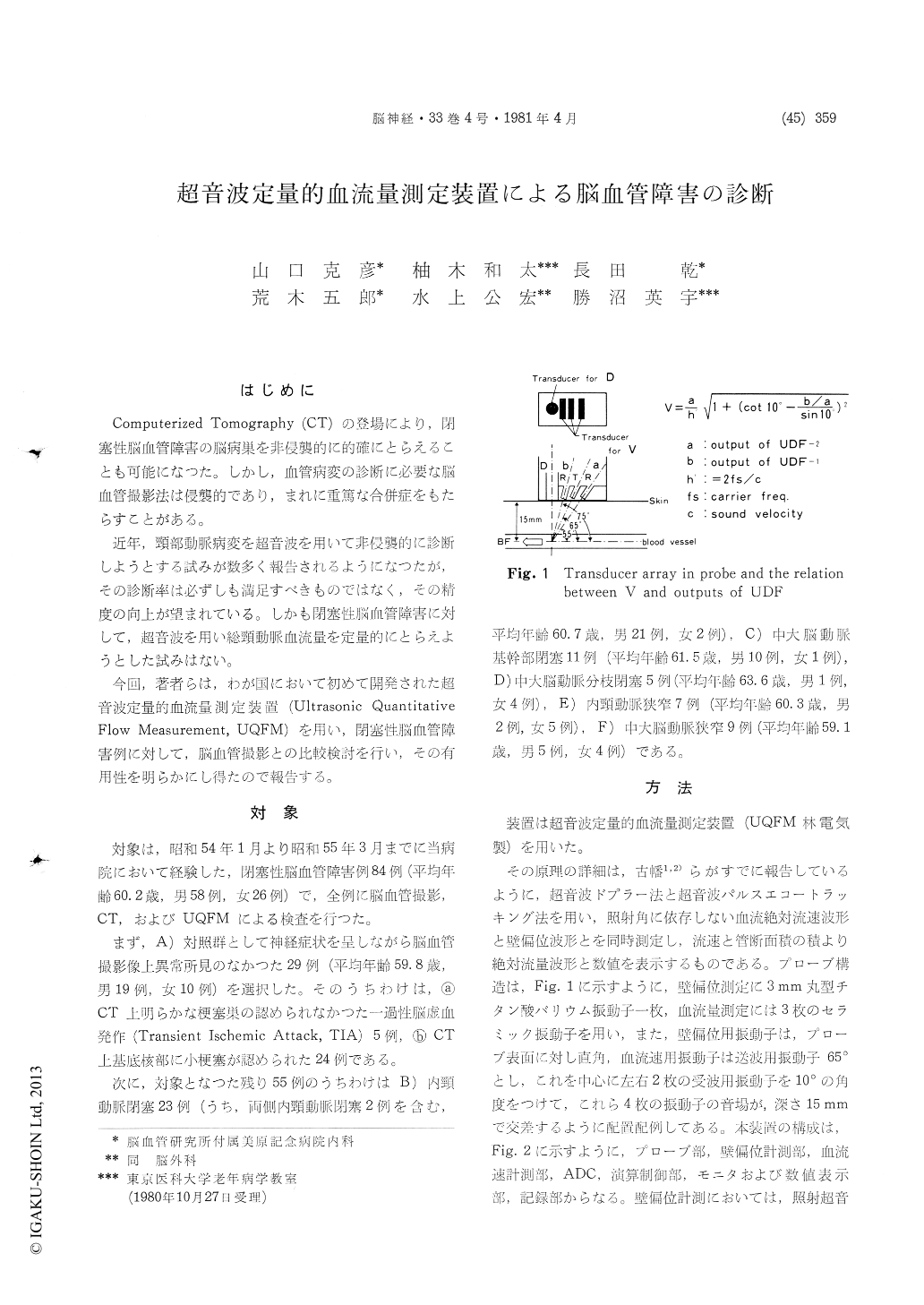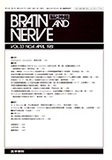Japanese
English
- 有料閲覧
- Abstract 文献概要
- 1ページ目 Look Inside
はじめに
Computerized Tomography (CT)の登場により,閉塞性脳血管障害の脳病巣を非侵襲的に的確にとらえることも可能になつた。しかし,血管病変の診断に必要な脳血管撮影法は侵襲的であり,まれに重篤な合併症をもたらすことがある。
近年,頸部動脈病変を超音波を用いて非侵襲的に診断しようとすろ試みが数多く報告されるようになつたが,その診断率は必ずしも満足すべきものではなく,その精度の向上が望まれている。しかも閉塞性脳血管障害に対して,超音波を用い総頸動脈血流量を定量的にとらえようとした試みはない。
Ultrasonic quantitative flow measurement (UQF M) is a newly developed device to determine theabsolute value of blood flow in the common carot-id artery by on-line microcomputer system from vessel diameter and the blood velocity. The UQFM has two major functions; one is an echo trucking method with phase locked loop to measure the vessel diameter and another is an ultrasonic Dop-pler technique to determine an absolute blood ve-locity in the common carotid artery, which is in-dependent of the angle between the probe and the vessel. The UQFM was employed in the study of 84 patients with occlusive cerebrovascular disease who were diagnosed by means of bilateral carotid angiography and CT scan.
On the other hand 29 patients with transient ischemic attacks or minor stroke who showed no abnormality on carotid angiogram were subjected as a control group. There was no significant dif-ference between the mean blood flow in the side of lesion and that in the opposite side.
Twenty-three patients showed occlusion of the internal carotid artery on angiogram. The mean blood flow in the occluded side was approximately 52 percent of that in the opposite side, and there was a significant difference (p<0.001).
Eleven patients showed occlusion of the middle cerebral artery at its main trunk. The mean blood flow in the occluded side was reduced to be 80 per-cent of that in the opposite side and there was a significant difference (p<0.01).
In five patients with occlusion of the branch of the middle cerebral artery, the mean blood flow in the occluded side was significantly lower than that in the opposite side (p<0.01).
There was no significant difference in the com-parison of the mean blood flow in the side of the lesion and in the opposite side in 7 patients with stenosis of the internal carotid artery and in 9 pa-tients with stenosis of the middle cerebral artery.
There was a good correlation between the com-parison of blood flow in the common carotid arte-ries provided by the UQFM and the angiograp-hical findings; there was a significant difference in the comparison of blood flow in the patients with occlusive lesion in the internal carotid artery or in the middle cerebral artery. It can be said that occlusion of the internal carotid artery is strongly suspected when the blood flow in the side of the lesion is reduced to half as much as that in the opposite side on the UQFM. Accordingly, the UQFM is considered to be very useful in screen-ing of occlusive cerebrovascular disease non-inva-sively.

Copyright © 1981, Igaku-Shoin Ltd. All rights reserved.


